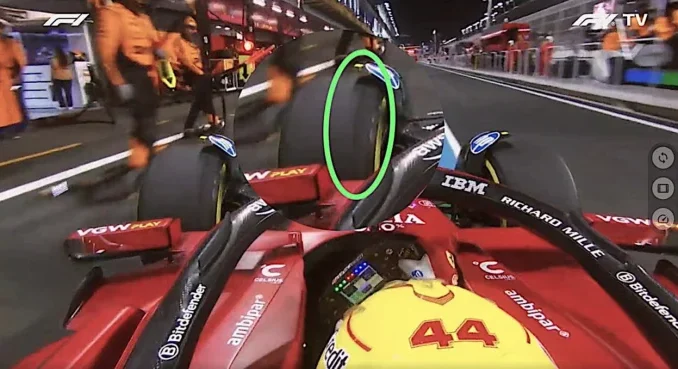
Ferrari is not working properly in F1. Hamilton and Leclerc were hoping to drive a more solid and stable car. Instead, the SF-25 has numerous defects that the team is trying to correct with the first real and substantial package of updates planned for Imola . In the meantime, Charles has developed a driving technique that allows him to express his maximum potential, and the results are evident. Lewis, on the other hand, is in great difficulty.
The Ferrari drivers have given their all, of course, but as for the seven-time world champion, there is a limit that he just can’t shake off . Many years spent in Mercedes and an unfortunate adaptation to the Reds: these are the main reasons that are currently slowing down the Englishman. The Maranello team has promised maximum commitment to support him.

There are no doubts about it, after all we are still talking about a real heritage of the team that must be protected in some way . To claim that the talent from Stevenage is no longer able to do well seems rather silly. He is in enormous difficulty. Despite this, the Chinese lightning with a pole and sprint victory confirms his value. He must give more, all true. We wait confidently.
The telemetry comparison between Hamilton and Leclerc
Today we delve into a particular analysis, to seek an explanation for the very different performance between the two Ferrari drivers. We always start from the onboard, the only true tool capable of providing all the details on the driving style of a F1 driver, combining verification with telemetry. Consulting this data, creating an average relating to the two different stints of races in Jeddah, we notice several evidences on the track.
We did this through every single speed, gap and throttle reading during the runs, providing an overview of the driver-related actions in the time frame examined. Some key points emerge from this analysis. The first important observation: during the entire stint, Hamilton was among the first to take his foot off the accelerator under braking to anticipate as much as possible the moment to reapply the gas.

Due to the Ferrari’s chronic understeer , Lewis tries to limit the entry to better concentrate on the exit, while the Monegasque adopts a different approach: he is almost always among the last to come off the accelerator and consequently delays the return on the gas during the exit phase. This highlights two important aspects. The first: Leclerc has developed a braking style that allows him to push the car to the limit on the entry.
Second: Hamilton, at the moment, is trying to compensate for the chronic problems of the SF-25 with a driving style that is not at all effective . During the race there were several radio communications regarding this aspect, both in the first and second stint: Adami reported to the British driver where he was losing the most time, often reminding him to work on the so-called “ peak and release” .
Lewis’s difficulties in Jeddah
With F1 cars you always try to go very hard on the accelerator, and then put into practice a perfect management on the release of the pedal before reaching the apex. Lewis was not able to optimize this aspect . For example, in turn 22 alone he was losing about two tenths compared to his teammate in braking. The pressure profile on the pedal has not yet been perfected, so there is still work to be done.

Going into more detail, it is noticeable how Lewis lost a lot of ground in the various “snakes” of the Saudi track. In these sections characterised by numerous very rapid changes of direction, he showed a rather unstable rear end of the car, where the lack of intrinsic rotation of the SF-25 very often transformed into oversteer in the exit phases . An aspect that forced a more conservative decimating conduct.
Generally speaking, the unstable load of a F1 car takes away the driver’s confidence. Despite this, the Monegasque manages to control the rear end thanks to an excellent sensitivity , the result of many years spent unloading the rear to go faster on the straight. Hamilton loses a considerable amount of minimum speed, not only compared to his teammate, but above all compared to Verstappen and Piastri.

This difference in approach inevitably leads to a different commitment to the compounds . Requiring less braking, the front of the car consequently receives less energy and limits the temperature developed on this axis. It is no coincidence that, upon returning to the pits, at the end of the first stint on the Medium tyres, car number 44 showed clear signs of graining on the front left .
In the image you can clearly see the “black stripe” on the inside of the tread, an off-center position due to the static camber imposed on the tire. By requiring more on the entry Charles manages to manage the front well , although he too was in difficulty until Russell returned to the pits and was able to ride in clean air. A combination of small things that, in the end, limit the life of the compound.

Leave a Reply